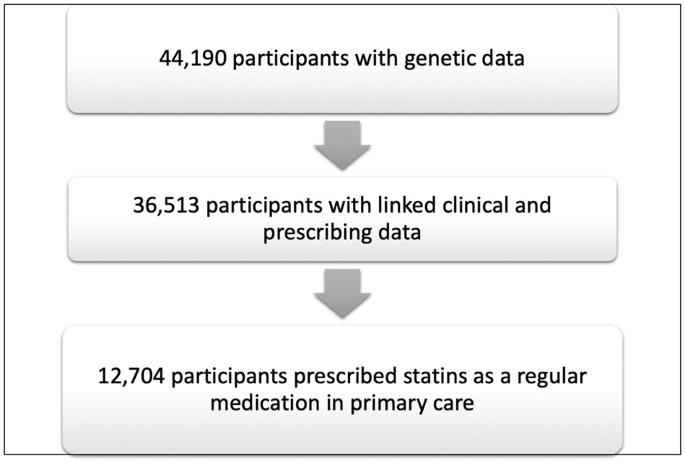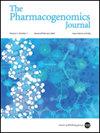SLCO1B1*5 is protective against non-senile cataracts in cohort prescribed statins: analysis in a British-South Asian cohort
IF 2.9
3区 医学
Q2 GENETICS & HEREDITY
引用次数: 1
Abstract
Reported association between statin use and cataract risk is controversial. The SLCO1B1 gene encodes a transport protein responsible for statin clearance. The aim of this study was to investigate a possible association between the SLCO1B1*5 reduced function variant and cataract risk in statin users of South Asian ethnicity. The Genes & Health cohort consists of British-Bangladeshi and British-Pakistani participants from East London, Manchester and Bradford, UK. SLCO1B1*5 genotype was assessed with the Illumina GSAMD-24v3-0-EA chip. Medication data from primary care health record linkage was used to compare those who had regularly used statins compared to those who had not. Multivariable logistic regression was used to test for association between statin use and cataracts, adjusting for population characteristics and potential confounders in 36,513 participants. Multivariable logistic regression was used to test association between SLCO1B1*5 heterozygotes or homozygotes and cataracts, in subgroups having been regularly prescribed statins versus not. Statins were prescribed to 35% (12,704) of participants (average age 41 years old, 45% male). Non-senile cataract was diagnosed in 5% (1686) of participants. An apparent association between statins and non-senile cataract (12% in statin users and 0.8% in non-statin users) was negated by inclusion of confounders. In those prescribed a statin, presence of the SLCO1B1*5 genotype was independently associated with a decreased risk of non-senile cataract (OR 0.7 (CI 0.5–0.9, p 0.007)). Our findings suggest that there is no independent association between statin use and non-senile cataract risk after adjusting for confounders. Among statin users, the SLCO1B1*5 genotype is associated with a 30% risk reduction of non-senile cataracts. Stratification of on-drug cohorts by validated pharmacogenomic variants is a useful tool to support or repudiate adverse drug events in observational cohorts.

在使用他汀类药物的队列中,SLCO1B1*5对非老年性白内障具有保护作用:对英国-南亚队列的分析。
背景:据报道他汀类药物的使用与白内障风险之间的关系存在争议。SLCO1B1基因编码一种负责他汀类药物清除的转运蛋白。本研究的目的是调查南亚裔他汀类药物使用者的SLCO1B1*5功能降低变体与白内障风险之间的可能关联。方法:基因与健康队列由来自英国东伦敦、曼彻斯特和布拉德福德的英国-孟加拉国和英国-巴基斯坦参与者组成。用Illumina GSAMD-24v3-0-EA芯片评估SLCO1B1*5基因型。来自初级保健健康记录关联的药物数据被用来比较那些经常使用他汀类药物的人和那些没有使用的人。在36513名参与者中,使用多变量逻辑回归来检验他汀类药物的使用与白内障之间的相关性,并对人群特征和潜在的混杂因素进行了调整。在定期服用他汀类药物与否的亚组中,使用多变量逻辑回归来检验SLCO1B1*5杂合子或纯合子与白内障之间的相关性。结果:35%(12704)的参与者(平均年龄41岁,45%为男性)服用了他汀类药物。5%(1686)的参与者被诊断为非老年性白内障。他汀类药物与非老年性白内障之间的明显关联(他汀类药物使用者为12%,非他汀类药物者为0.8%)通过纳入混杂因素而被否定。在服用他汀类药物的患者中,SLCO1B1*5基因型的存在与非老年性白内障风险的降低独立相关(OR 0.7(CI 0.5-0.9,p 0.007))。在他汀类药物使用者中,SLCO1B1*5基因型与非老年性白内障风险降低30%有关。通过验证的药物基因组变异对药物队列进行分层是支持或否定观察队列中药物不良事件的有用工具。
本文章由计算机程序翻译,如有差异,请以英文原文为准。
求助全文
约1分钟内获得全文
求助全文
来源期刊

Pharmacogenomics Journal
医学-药学
CiteScore
7.20
自引率
0.00%
发文量
35
审稿时长
6-12 weeks
期刊介绍:
The Pharmacogenomics Journal is a print and electronic journal, which is dedicated to the rapid publication of original research on pharmacogenomics and its clinical applications.
Key areas of coverage include:
Personalized medicine
Effects of genetic variability on drug toxicity and efficacy
Identification and functional characterization of polymorphisms relevant to drug action
Pharmacodynamic and pharmacokinetic variations and drug efficacy
Integration of new developments in the genome project and proteomics into clinical medicine, pharmacology, and therapeutics
Clinical applications of genomic science
Identification of novel genomic targets for drug development
Potential benefits of pharmacogenomics.
 求助内容:
求助内容: 应助结果提醒方式:
应助结果提醒方式:


